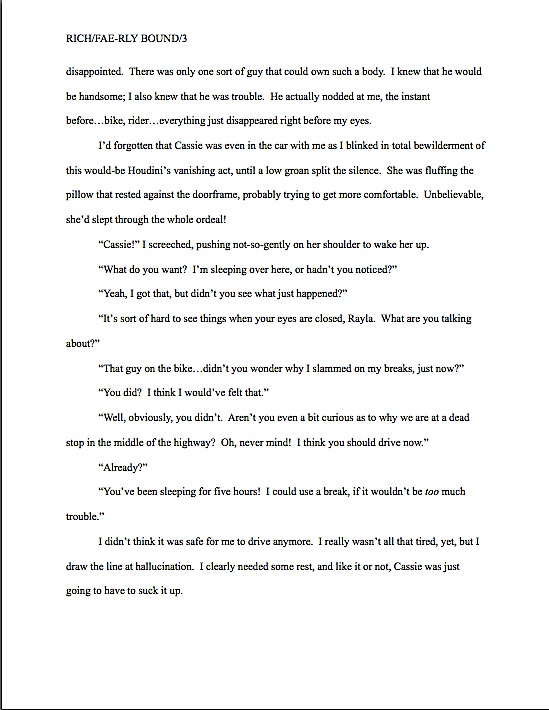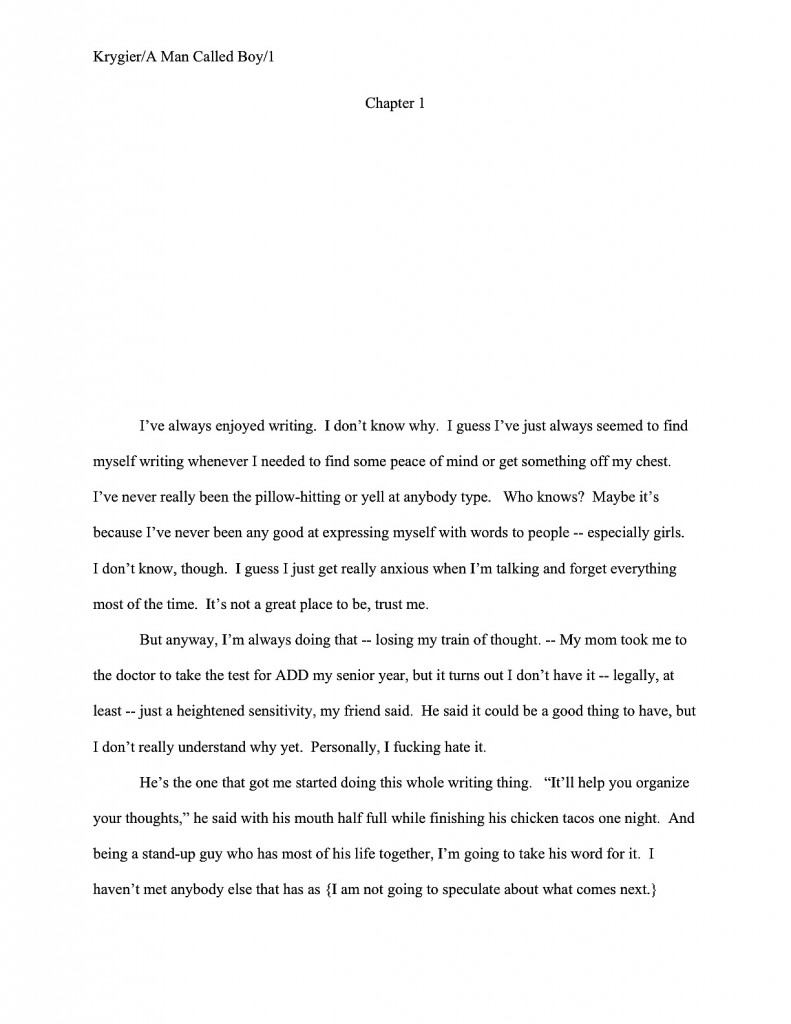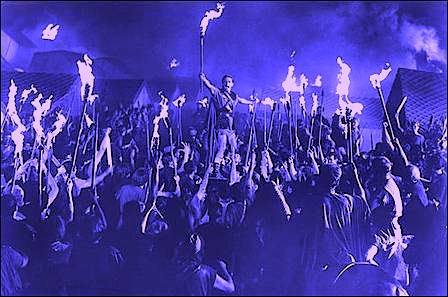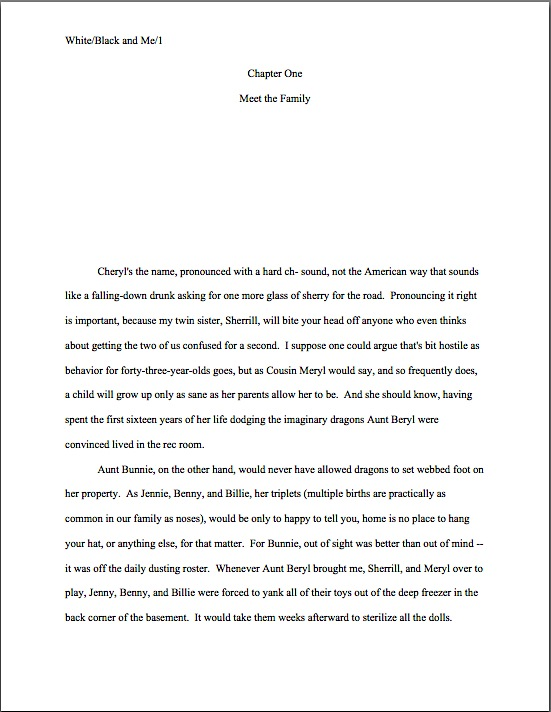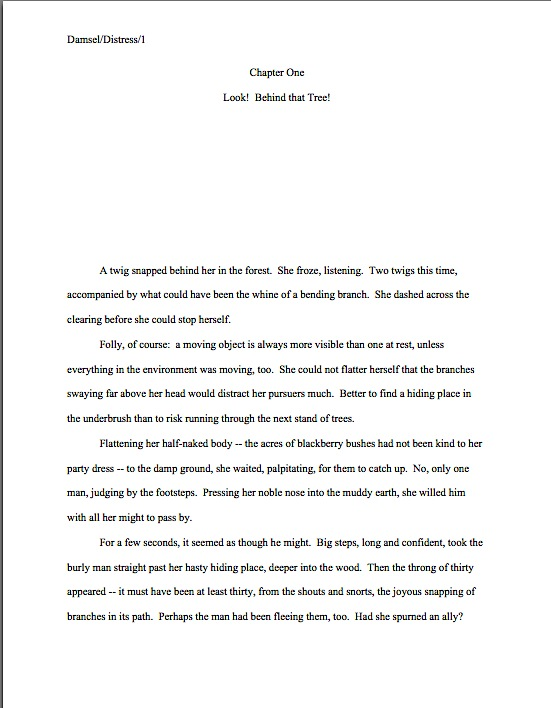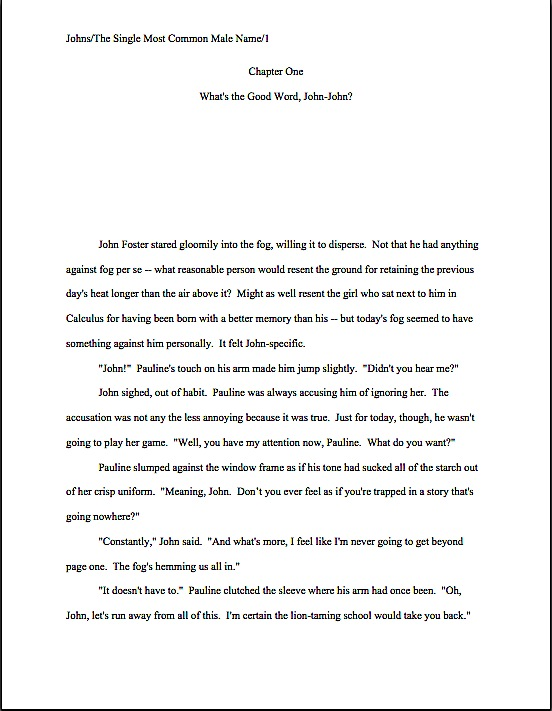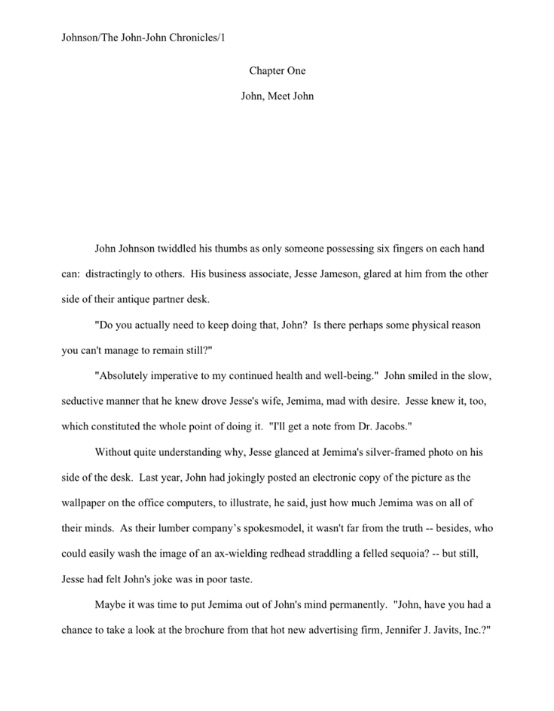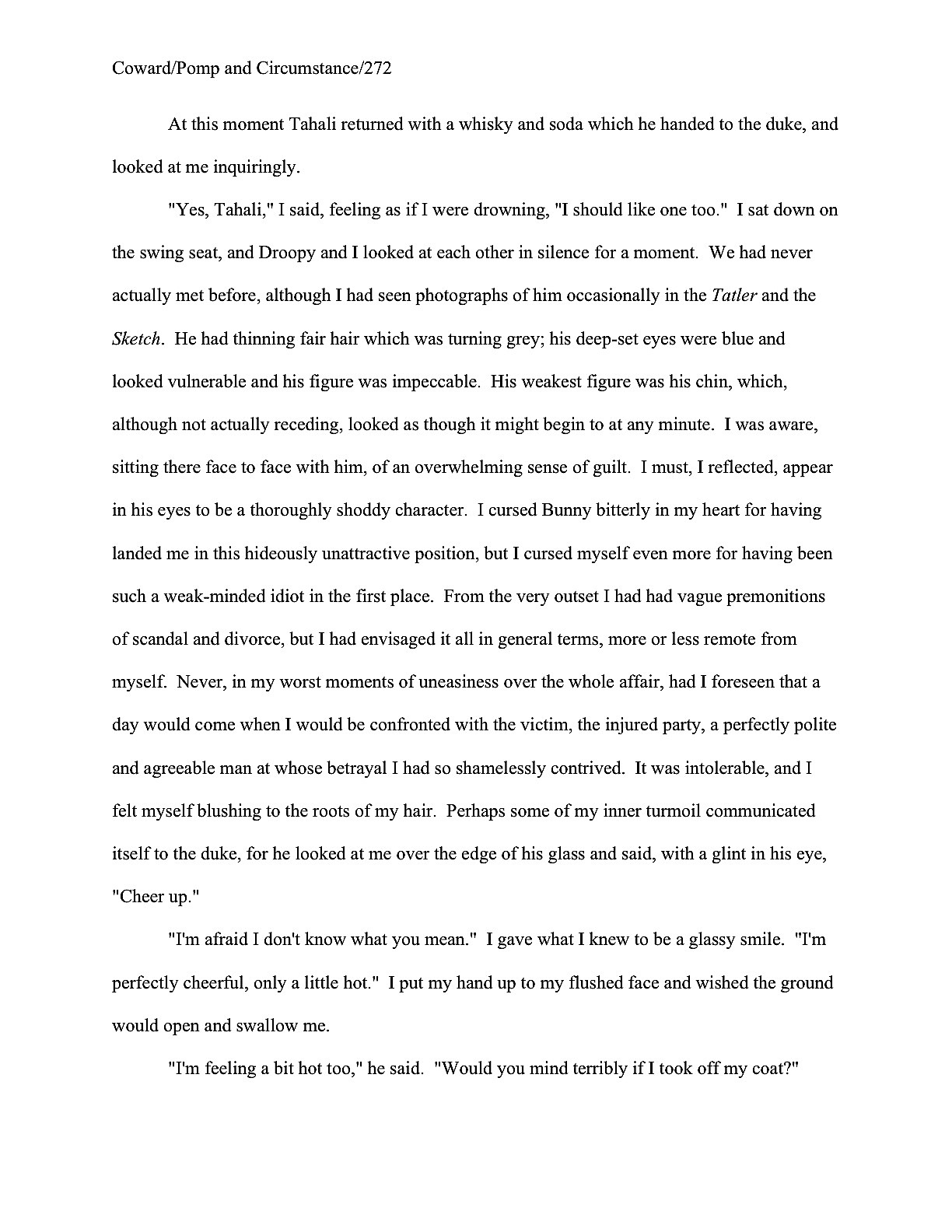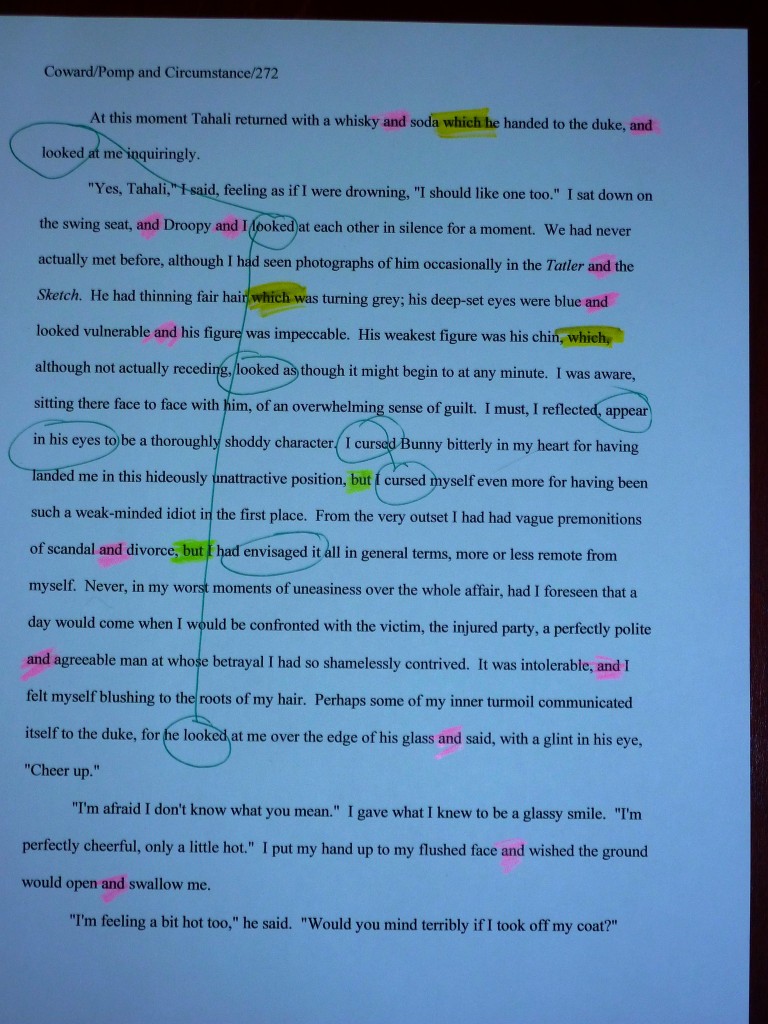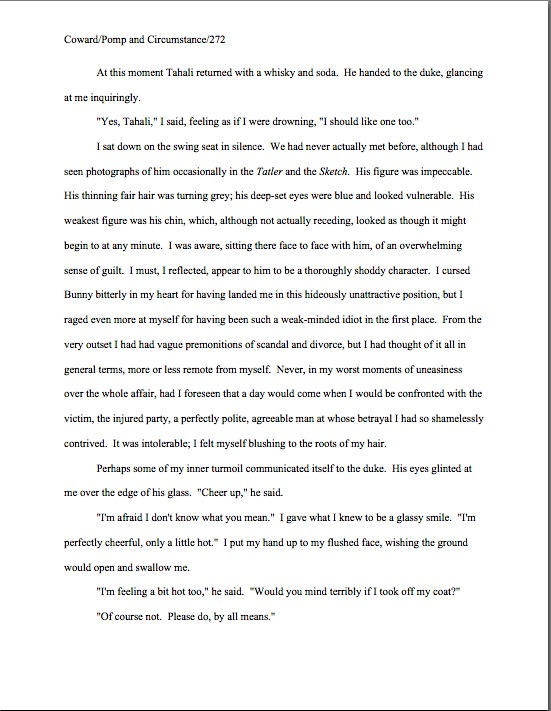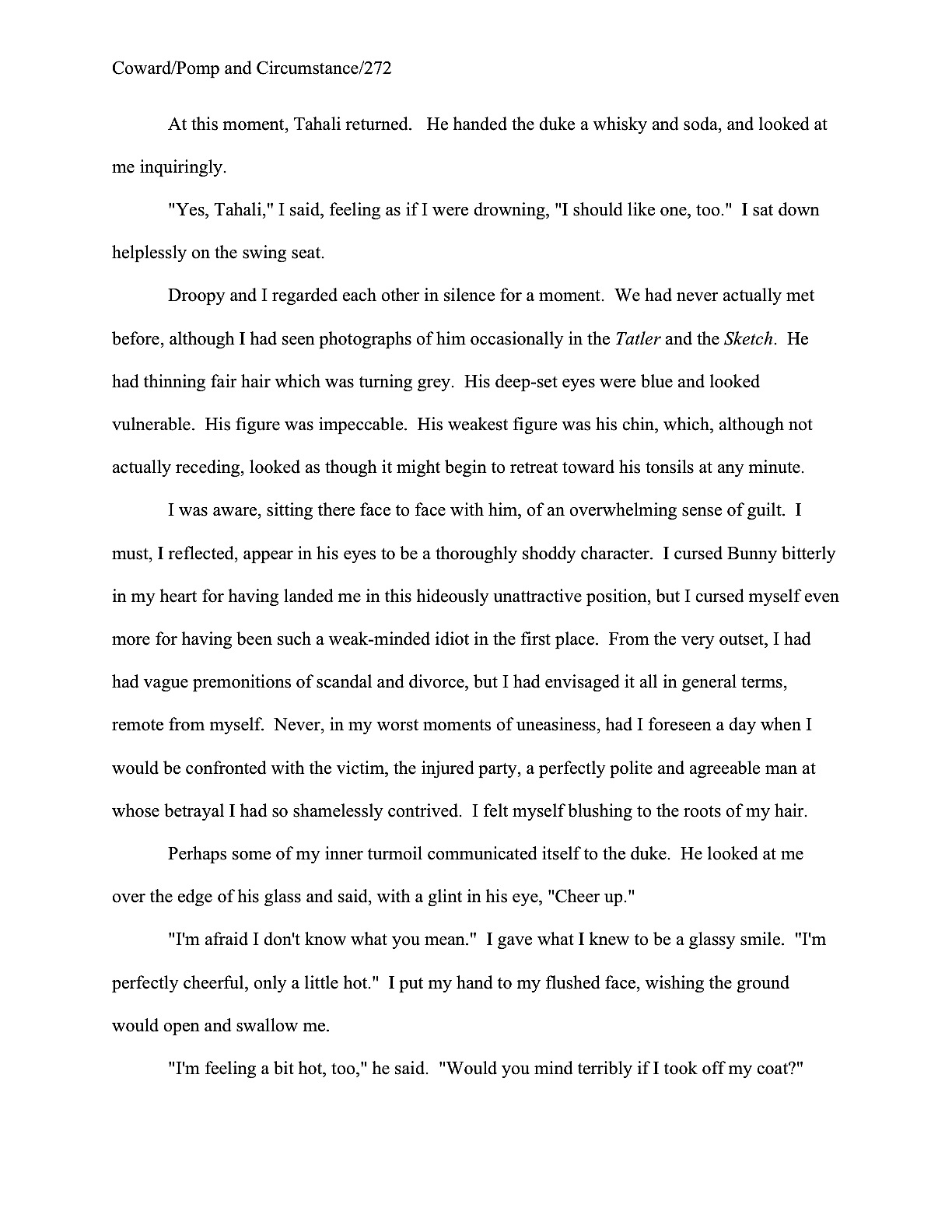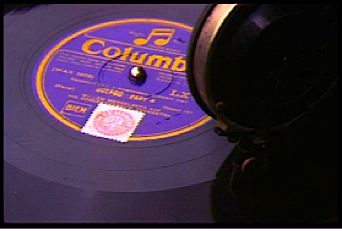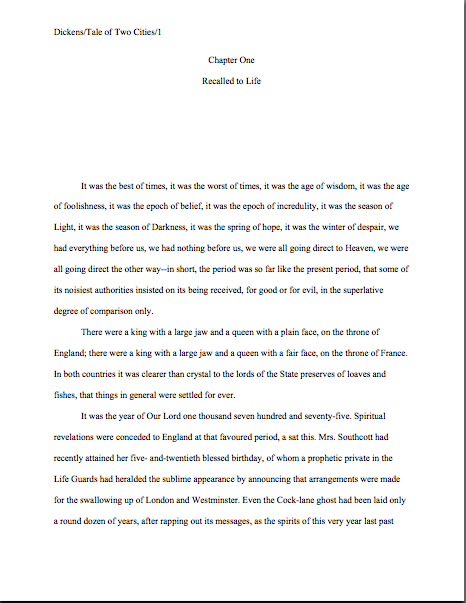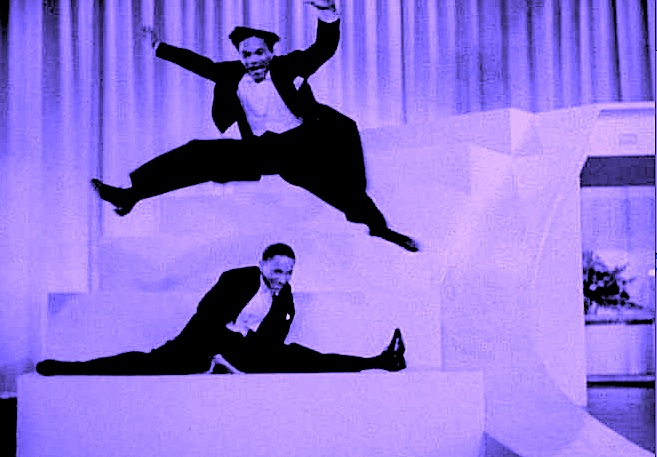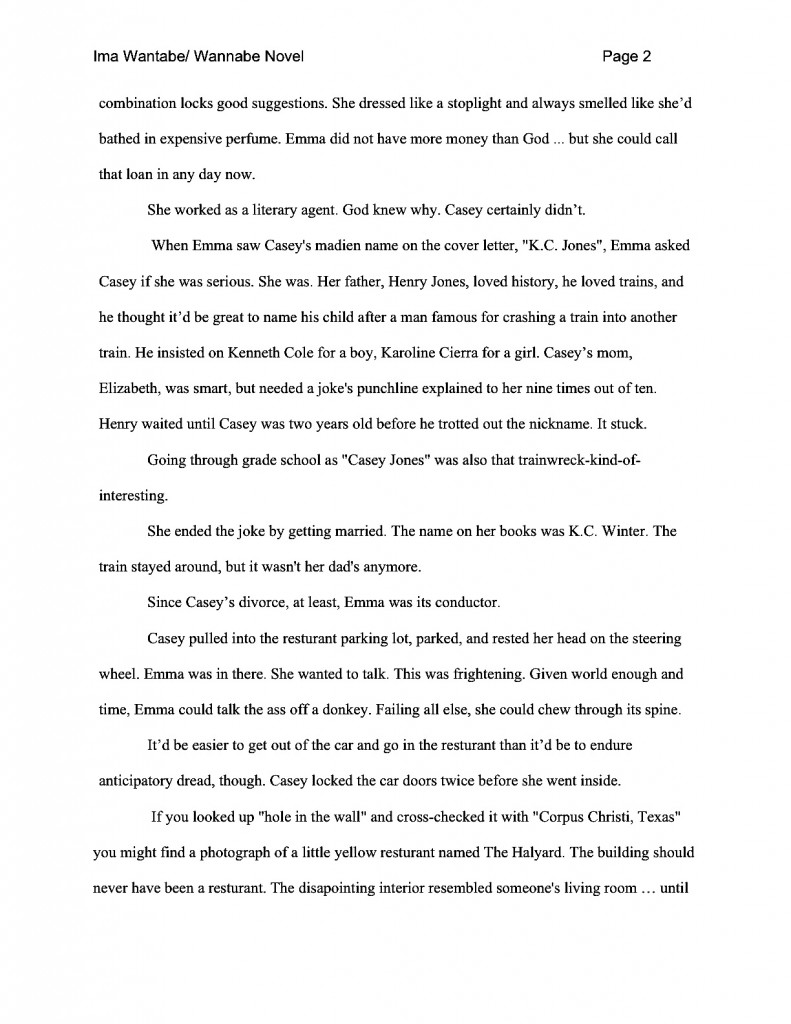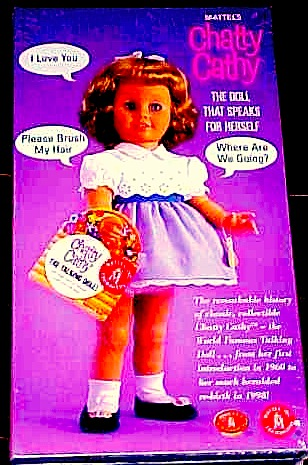
When last we met, I was urging you, through the oh-so-subtle means of inundating you with example after example, into an appreciation of just how annoying redundant, non-character-revealing, or just plain dull dialogue can be to someone who reads manuscripts for hours on end. Like, say, Millicent the agency screener or Mehitabel the contest judge.
Why bring this up in the midst of an ongoing series on self-editing a Frankenstein manuscript? Well, several reasons. First — and it pains me to tell you this — more otherwise well-written submissions and contest entries drop precipitously in M & M’s respective esteems due to lackluster dialogue than is generally believed. Due to the pervasiveness of this phenomenon (and we’re gearing up for the second reason here), typically, one of the quickest, easiest ways to cut length off an over-long manuscript is to track down and excise the ordinary, everyday dialogue, the chatter that neither advances the plot, creates interesting conflict in the moment, or reveals character.
How can I state that so confidently? Because almost every writer who has taken an English composition course was told repeatedly that good dialogue should sound real, the average novel or memoir manuscript overflows with dialogue that’s apparently there simply because people say those types of things.
Which is not to say that striving to make your dialogue realistic is bad writing advice. It’s very good advice — but what the vast majority of composition teachers should have added immediately thereafter yet did not was an explanation that real-sounding dialogue and the things that people actually say in real life are not the same thing.
The former rings true on the page; while the latter can sometimes be very interesting, it can also lull the reader into a deep, deep slumber. Trust me, when people talk about an author with a good ear for dialogue, they’re referring to someone who consistently produces real-sounding dialogue, not someone who simply holds a microphone up to life and records the unedited results on the page.
Of course, we writers want to be true-to-life in our dialogue: as Virginia Woolf wrote, “fiction must stick to the facts, and the truer the facts, the better the fiction.” But let’s not forget that in order to maintain a reader’s interest, a book has to have entertainment value, too — and that however amusing a verbal tic might be in person, repetition is often annoying in on the page.
This is especially likely to occur when a character is tired, angry, or in pain, I notice: all of a sudden, the dialogue sounds as though all of the characters are trapped in one of those interminable Samuel Beckett plays where the people are doomed to move immense piles of sand from one end of the stage to the other with teaspoons. See if this dialogue sounds familiar, theatre-goers:
“Oh,” Babette said. “You’re home.”
Rufus nursed the thumb the dodo trod upon earlier. “Yeah.”
“Have a nice day?”
“Um-hm.”
“I was cleaning out the attic today, and I came across that picnic blanket we used when we went out to Rockaway Beach to scatter Grandfather’s ashes. How it rained that day, and then the sun broke out as if all of our ancestors and God had joined forces to drag the clouds aside to smile upon our picnic.”
“Yeah. We sure got wet that day.“
“Ham sound good for dinner?”
“Yeah.”
A good third of the dialogue Millicent sees runs approximately like this. Understand now why she might become just a tad touchy at the sight of dialogue that provides neither character development nor moves the plot along?
Ordinary dialogue makes her especially antsy — again, I hate to be the one to break this to you, but if I don’t, who will? — on page 1. And that’s unfortunate, since this kind of chat is quite popular in the opening pages of manuscripts.
Why would the dialogue above have annoyed Millicent? Well, cast your eyes over it and tell me: what’s going on here? What is this story about? Who are these people, and why are 7 of the 10 opening lines of this story wasted on dialogue that doesn’t even begin to answer any of these questions?
Already, I see some hands raised out there in the ether. “But Anne,” writers of the real everywhere protest, and who can blame them? “It’s unfair to assume that every reader, even professional ones, would be turned off by the example above, even if it did appear on page 1. I think that Millicent and Mehitabel would be intrigued by its very terseness; I believe it would render them more likely to keep reading, not less, if only to find out what’s going on. I, for one, want to hear more about that dodo bite.”
I’m glad you brought that up, mythical hand-raisers, because the strategy of withholding basic information from the reader in an opening scene in order to create curiosity about what is to come is a suspense-building technique popular only with aspiring writers. Established writers soon learn not to do it, for the exceedingly simple reason that professional readers like Millicent, Mehitabel, and even Maury, Millie’s cousin who works as an editorial assistant at a publishing house, tend not to find this kind of opening titillating.
How do they regard it? Negatively, almost always. There’s even a term for it: false suspense.
That’s also the term for when an interesting one- or two-paragraph teaser, the kind that aspiring writers so love placing within italics, gives way to an apparently or only tangentially unrelated second scene. “Hey!” Millicent cries, spitting out her mouthful of scalding latte, “what happened to that darn interesting plot I’d gotten absorbed in? What’s this writer trying to do, hook me with something exciting, then drop me into a comparatively mundane storyline?”
Let’s be honest, folks: that’s precisely what most writers who use this trick are trying to do. Professional readers are wise to it by now. Remember, part of being a good storyteller involves knowing when to relieve the suspense.
I’m not here to talk about plotting today, however — but don’t worry; I’ll be coming back to it later in this series. For now, suffice it to say that even if you are one of those writers who absolutely adores reproducing everyday speech down to the last grunt and hesitation, you might want to keep those mundanities off of page 1 of your submission. Or page 2. Or, really, out of the opening chapter.
You wouldn’t want Millicent, Mehitabel, or Maury to mistake your submission for the hundreds of thousands of others that don’t have as good an ear for dialogue as you do, right?
As a general revision guideline for any page of the manuscript, I like to flag any piece of dialogue that contains more than one use of yeah, really, yes, no, uh-huh, or, often, um. Almost invariably, these are an indication that the dialogue could either be tightened considerably or needs to be pepped up.
Similarly, anyway and however in dialogue are pretty reliable flares, indicating that the speaker has gotten off-topic and is trying to regain his point — thus warning the manuscript reviser that perhaps this dialogue could be tightened so that it stays on point.
I’ll admit it: my fictional characters tend to be chatty (dialogue is action, right?), and early in my career, I was once taken to task for it by a fairly well-known writer of short stories. She had just managed to crank out her first novella — 48 pages typeset, so possibly 70 in standard manuscript format — so perhaps unsurprisingly, she found my style a trifle generous with words.
“Only show the dialogue that is absolutely necessary,” she advised me, “and is character-revealing.”
Hard to argue with that, eh? Yet, like most writers receiving critical feedback, I fought it at first. Since the dialogue in my advisor’s published works has seldom, if ever, strayed beyond three lines, regardless of situation or character, I was not particularly inclined to heed this advice — have you noticed how often it’s true that established writers with little or no teaching background spout aphorisms that all boil down to write as I do? — but I have to say, it has been useful in editing, both for others’ work and my own.
But I apply a slightly different twist to it. For each line of dialogue, I ask myself: Is this here because it needs to be, or just because it’s something a character like this would say? In memoir and reality-based fiction, it can indeed be there simply because someone actually did say it — but is this particular line essential to the story being told here? And regardless of whether it’s a quote or not, if it isn’t either plot-advancing, character-revealing, or interesting in its own right, does it really need to be on the page at all?
Why, yes, you’re right, everyone who just grabbed the nearest sofa cushion and screamed into it: that is an awfully high standard to apply to every single line of dialogue in a manuscript. Your point?
To help the rest of you understand why your fellow readers felt faint at the mere thought of placing their manuscripts under that powerful a microscope, let’s take a gander at a species of dialogue gets under your garden-variety Millicent’s skin like wet sand under a swimsuit: the de facto monologue.
You know, the kind of ostensible dialogue that involves one character talking about something, while the other character doesn’t really add much to the conversation. It tends to run a little something like this:
“I can’t believe how arrogant that car dealer was!” Antoinette fumed. “You’d think he’d never met a woman who wanted to buy a car.”
“Yeah,” Steve replied.
“You can say that again. I should have told him that I was going home to e-mail the National Organization of Women, to get them to issue a general boycott of his lot.” Angrily, she wrestled to undo the bungee cords that held the driver’s side door onto her 1978 Saab, provided that she never attempted to accelerate above thirty miles per hour. “Did you see how surprised he was that we left?”
“Um-hm.”
“I’ll bet you did. You don’t suppose his telling me that women don’t know anything about cars is his standard sales technique, do you? Other women can’t actually have bought cars after a line like that.”
“No.” Steve was crawling into the passenger seat via the smashed back window. “I imagine not.”
Antoinette dug under the visor to retrieve the seatbelt. “Well, I wouldn’t be so sure. It’s like those construction workers who yell disgusting things at women walking by their worksites: if it didn’t provoke a positive response at least once every 10,000 times, would they keep doing it?”
“Could be.”
“What’s that supposed to mean? You think I’m blaming the victims?”
“I never said that.”
“Anyway,” she concluded after she had successfully hot-wired the car, so she would not have to force the mangled key into the half-melted ignition, “I guess he won’t be offering five dollars on a trade-in again!”
“Absolutely,” Steve murmured, clinging for dear life to what was left of the dashboard.
I ask you: what purpose is Steve serving in this conversation, other than providing validation, the opposite of conflict? And if he isn’t in the scene for any other reason, why doesn’t he just shut up and let Sandy blurt out her entire speech, instead of adding line after excisable line of mostly colorless dialogue?
Not to mention repetitious. We all know by this juncture, I hope, how Millicent and her ilk feel about that in a submission: “Next!”
Even if you find none of those excellent arguments for revision convincing, there’s another, quite practical one you might want to consider. Just look, self-editors concerned about the fact that your manuscript is 40 pages longer than the expected length for a first book in your category, at how much shorter this scene would be if it were presented as an actual monologue:
“I can’t believe how arrogant that car dealer was!” Antoinette fumed. “You’d think he’d never met a woman who wanted to buy a car. I should have told him that I was going home to e-mail the National Organization of Women, to get them to issue a general boycott of his lot.” Angrily, she wrestled to undo the bungee cords that held the driver’s side door onto her 1978 Saab, provided that she never attempted to accelerate above thirty miles per hour. “Saying that women don’t know anything about cars is sure a lousy sales technique. Other women can’t actually have bought cars after a line like that.”
While Steve crawled into the passenger seat via the smashed back window, she dug under the visor to retrieve the seatbelt. She set about hot-wiring the car, so she would not have to force the mangled key into the half-melted ignition.
“Or maybe it’s like those construction workers who yell disgusting things at women walking by their worksites: if it didn’t provoke a positive response at least once every 10,000 times, would they keep doing it?” The engine roared. “Bingo, baby! I guess he won’t be offering five dollars on a trade-in again!”
“Absolutely,” Steve murmured, clinging for dear life to what was left of the dashboard.
See? Steve’s silence makes his unwillingness to argue every bit as clear as his bland continual agreement did above. So what would have been the payoff for retaining his chatter?
Perhaps more to the point, if such lightly-disguised monologues provide neither character development, interesting inter-character conflict, nor, frankly, many sentences worth preserving for posterity, why are they so very popular with aspiring writers? Expediency, mostly: there’s no denying that having a protagonist, villain, or crucial minor character suddenly hold forth like Hamlet is a mighty efficient way to convey information to a reader.
But from the professional reader’s point of view, this use of page space is not efficient at all: it’s the narrative equivalent of having a play’s lead excuse himself to the other characters mid-scene, walk to the edge of the stage, and say, “Look, I really don’t have time to convey everything you need to know in dramatic form, so I’m simply going to tell you what would have happened in the next couple of scenes if we had bothered to stage them, okay?”
It’s not okay, at least according to Millicent. She’s reading your manuscript partially in order to find out how you tell a story — is it honestly in your interest to make her read through filler before reaching your best writing?
Ditto with dialogue that repeats what the reader already knows, as in that archetype of easily cut-able scenes, the one where the protagonist tells another character what happened in a previous scene. As in what the reader has just read. This might be defensible if the protagonist were adding a new twist on the information, but most of the time, s/he recaps the information exactly as the reader has already experienced it because — you can see this coming, can’t you? — it’s what a reasonable person might do in real life.
How easily cut-able are such scenes, you ask? Well, let me put it this way: it’s rare that an accurate retelling, even one that takes up pages of text, could not be summed up in a single sentence: Sheila ran back to the classroom and told everyone what had happened.
Here’s an axiom for the ages: by definition, redundant text adds nothing new to a narrative. It merely takes up space.
That answer didn’t mollify some of you reality-huggers, did it? “But Anne, isn’t realism valuable in and of itself? I know plenty of people who effectively have their own catchphrases.”
As do I, as it happens. In fact, I recently enjoyed a long, gossipy conversation with a very old friend of mine with a very distinctive speech pattern: she says, “Like I said…” every other minute or so. In a long anecdote — to which she is quite addicted, as a world traveler with unusual tastes in traveling companions — she often uses this phrase ten or fifteen times.
Since we grew up together, you would think I would know where she had picked up this rare trope, but I don’t; it’s an adult acquisition. We have both wandered far from home, evidently. But still, you’d think I would have some inkling as to its origin: she and I were so closely allied in high school that at her wedding, both her father AND her uncle spent 45 minutes grilling my boyfriend about his prospects and intentions toward me.
You might say that we come from a close-knit community.
Our hometown does in fact have a distinct speech pattern, a mixture of the lilt remaining when a small town in Switzerland (cow and wine country) picked up and became a small town in California (wine and cow country), certain Mexican-influenced words, a smattering of barrel-related French, and a linguistically inexplicable tendency to pronounce “mirror” as “meer.” Being a farming community (the aforementioned wine), of course, certain agricultural tropes abound in season, such as, “How about this rain? Sure do need it,” “The grapes would have been in by now, 20 years ago” (untrue, incidentally), “Did you hear that bears have been at Farmer X’s grapes?” (true, incidentally; brown bears like expensive fruit), and “Damned drunken tourists have been at my vines again. They think every grape in sight is a free sample.”
But “like I said,” no. So I ask you: would it or would it not be a good means of revealing the background of a character from my home town to incorporate it repeatedly in the text? What about using it as that character’s personal catchphrase?
Pardon my asking, but what precisely would it reveal about her character — other than the not-very-interesting fact that she uses this phrase often? If it does not add anything to the dialogue other than repetition, what possible incentive could I have to reproduce this verbal tick except so readers who already knew the person upon whom the fictional (or memoir) character was based would recognize her?
Is that honestly a good enough reason to bore all of those potential readers who have never had the pleasure of making her acquaintance? Would those excellent souls gain anything but chagrin out of my fidelity in reproducing a rather annoying true-life speech pattern on the page?
The answer to all of those seemingly rhetorical questions was no, by the way. The fact that a real-life person a writer has chosen to use as a character in a book really speaks repetitively does not justify forcing the reader to put up with it.
Now, being a sharp-eyed writer with a strong sense of verisimilitude in dialogue, you may have noticed something about all of the phrases that actually were typical of my home town, real-life tropes that actual people say bloody often in my native neck of the woods. Chant it with me now: they would be DEADLY dull in written dialogue.
As would a character who constantly punctuated her personal stories with “like I said…” Or indeed, almost any of the small talk which acquaintances exchange when they bump into one another at the grocery store. Take this sterling piece of Americana, overheard in Sunshine Foods in my hometown not so long ago:
Mrs. Price: “See you got some sun today, Rosemary.”
Mrs. Darter: “I was picking peaches. Sure is a great crop this year. How did your dentist appointment go?”
Mrs. Price: (Laughs.) “The dentist won’t be buying his new boat on my dime. Was that the Mini girl who just dashed by?”
Mrs. Darter: (Craning her head around the end of the aisle.) Could be. Haven’t seen her for a while. She’s not married yet, is she?”
Mrs. Price: (Shakes her head.) “Oh, hi, Annie.
Dr. Mini: Oh, hello, Mrs. Price. Hello, Mrs. Darter.
Mrs. Darter: I haven’t seen you in a long time, dear. Moving back to town, I hope?
Mrs. Price: Or just visiting friends who have been loyal enough to return to the town that nurtured them as babes?”
Dr. Mini: (Seeking escape route.) How’s your son, Mrs. Price? I haven’t seen him since high school. (Murmurs to significant other, covered by Mrs. A’s lengthy description of the relative heights, ages, and weights of her grandchildren.) Thank God.
Mrs. Darter: And how’s your mother?
Dr. Mini: Oh, fine, fine. I’d better be going. Nice to see you both.
Mrs. Price: Give my regards to your mother. Tell her that we hope to see her soon.
Dr. Mini: (Wheeling cart away.) I will. Remember me to (thinks hard) Bobby.
Mrs. Price: Well?
Mrs. Darter: (Sighing.) Still no wedding ring.
Mrs. Price: Just wait until I tell Bobby. At least he’ll be pleased.
Okay, what’s wrong with this scene as dialogue on the page, over and above its repetition? You can hardly fault this exchange for verisimilitude — it not only is a transcript of an actual conversation, but it sounds like one, literary traits that do not, as I mentioned, necessarily go hand-in-hand — but it’s missing something, right? Any guesses, wild or otherwise?
Give yourself three gold stars if you yelled, “Well, it’s hardly character-revealing, is it? Who are these people as individuals, as opposed to representatives of a collective small-town mentality? And why oh why do we learn so little about Bobby?”
See it now? This exchange might as well have been said by actors, rather than specific people with personal quirks. Granted, as is, it might tell you a little something about the spying capability of my home town’s feared and respected Little Old Lady Mafia, but it doesn’t tell you much about the speakers as human beings, or our relative positions within society.
And if there was a plot (other than to get me married off to someone with whom I might produce more little winemakers, a quest that is ongoing and perpetual), its intricacies are not particularly well revealed by this slice o’life. (But trust me, you don’t want to know more about Bobby. His character strikes me as inherently hostile to development.)
More to the point of this series, the boring bits of this ripped-from-reality dialogue would be significantly more difficult to edit out of a manuscript than a linguistic trope such as my old pal’s “like I said…” Cutting the latter would a particularly easy edit, not only because the writer could simply use the FIND function in word to excise it, but because it would be a pretty sure indicator that the speaker is repeating herself (although interestingly enough, my friend habitually uses this phrase when she ISN’T repeating herself, I notice).
But reworking the exchange above to render it snappy? That would take an almost complete rewrite. Nevertheless, one of the best places for a self-editor to start looking to trim manuscript fat — or even eliminate entire scenes — is generally in scenes taken directly from real life. Most writers cut-worthy include elements in such scenes simply because it happened that way, not because those elements or lines of dialogue add crucial elements to the scene.
To put it bluntly, blandness tends to linger in reality — and that’s potentially problematic at the submission stage. To paraphrase one of Millicent’s most frequent exclamations, via a quote from Nietzsche: “Against boredom, even the gods struggle in vain.”
While I think we can all agree Nietzsche would have made a lousy agency screener — and an even worse agent — his observation might be a good adage to bear in mind while preparing your manuscripts for submission. For one very simple reason: some screeners and contest judges’ maximum tolerance for boredom in a manuscript is well under a minute.
So if you’ve ever heard yourself saying, “Just wait until page 15; it really picks up there,” you might want to give some thought to how to make your submissions more user-friendly for a reader with the attention span of an unusually persistent mosquito. Not that every Millicent, Mehitabel, or Maury would stop reading that quickly — but enough of them would that it just doesn’t make strategic sense to take a chance.
Especially on page 1. Had I mentioned that?
Oh, seven or eight times? Funny, I hadn’t noticed. Keep up the good work!




